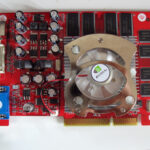The days when you only had one computer in your house are gone for most people. But when you have more than one computer, it’s nice to be able to share things between them. What you need is a LAN. LAN stands for “Local Area Network,” and it refers to the infrastructure that allows your computers to share data between them. Whether you’re too lazy to go upstairs and watch the video on the other computer or you’re always fighting over who gets to use AIM, a LAN is the solution for you.
In this guide I will cover the components necessary to set up a LAN, as well as how to install and use them. My primary focus will be setting up a shared high-speed (cable or DSL) Internet connection, but that same network will also let you share files between computers.
Components
The following are items necessary to share your Internet connection (assuming you already have the modem set up):
A router: The router is basically the brain of the whole setup. It keeps track of which computers are hooked up to the network, gives them IP addresses so they can communicate with each other, and serves as the relay point between the computer and the Internet connection. When data goes out to the Internet, the router remembers who it came from and sends the response back to that computer. You plug the router directly into the modem via an ethernet cable, and all other computers are eventually connected in some fashion to the router. If you want to have a wireless network in your home, a wireless router will save you money over a wireless access point connected to a standard router.
Switches: A switch is a smarter version of a splitter. Essentially all it does it let you add additional computers if or when you run out of ports on the router itself. You only need a switch if the ports on the router are not enough. Alternatively you could get a hub, but a switch has the advantage of sending data only to the computer that asked for it, not to every computer, while a hub lowers your bandwidth by sending every computer the information that only one computer asked for. Switches are usually cheaper anyway, since they’re more popular.
Ethernet cables: Standard network cables, which look like phone cords but fatter. (DO NOT try to use a phone cord, as you’ll damage the network adapter.) You need one for every connection you need to make anywhere, and they come in various lengths.
Network adapters: A network adapter is the device on a computer that allows you to connect it to a LAN. If your computer is relatively new, you will have a network adapter already. Again, the jack looks like a phone jack but wider. Your laptop may also have a built-in wireless antenna, which will give you access to the wireless network. You can also buy wireless network adapters for desktops or laptops; follow the directions on whichever type you buy to install them.
That’s it for parts. As for what speed you want, the standard for wired connections is 100Mbps (Megabits per second), and for wireless connections it’s usually 11, 54, or 108Mbps. 11Mbps tends to be a little slow, but 54 is good enough for most anything, except for copying large files (in which case you’ll be better off temporarily plugging it in with a wire). The specification for 54Mbps is 802.11g, which you’ll see on the router and the wireless adapters. If you want a faster wired connection, 1Gbps (which is 1000Mbps) is available, but you need more expensive cables and routers/switches, so to share an Internet connection it’s not at all worth it, since your Internet connection won’t be above 10Mbps for a long time.
Installation
I’ve touched on a lot of this already, but it’s quite simple. The router goes straight into the modem (with an ethernet cable), and all the other computers plug into the router, either directly or through a switch if you have too many. If you use a switch, one of the ports on the switch has to be connected to the router, once again either directly or through another switch. The rest can be plugged into other computers (or other switches – this is known as daisy-chaining them). If it’s too hard to wire a specific computer, it may be worth saving the time and getting a wireless adapter instead. For a desktop this will be either a USB adapter (which you just plug in and install using a provided CD) or a PCI card (which requires opening your computer, but will give you higher signal strength – this one will also have to be installed). Most wireless routers support between 16 and 256 wireless connections simultaneously (depending on how much you spend), so you’re pretty much covered.
Router Settings
Routers have lots of settings, but most of them are fine with their defaults. Be careful not to change something if you don’t know what it is, because you could end up screwing everything up. If you do, on every router there’s a hole somewhere that you can stick a pin into to reset the router to original settings. So there’s your last resort.
DHCP settings: DHCP is a system that automates giving out IP addresses to the computers on your network (keep in mind these are internal addresses, and all your computers will have the same external address on the Internet). Unless you know why you’re turning it off, it should always be on. Depending on the router, you may be able to reserve IP addresses for specific computers. You will reserve these IP addresses based on the computer’s MAC address, which never changes. You can find a computer’s MAC address in Windows XP by opening a Command Prompt, typing in “ipconfig /all”, finding the appropriate network connection, and finding the “Physical Address” for that connection.
Virtual server/port forwarding settings: It may be called by other names as well, but these settings allow you to direct traffic on certain “ports” (channels that data can come in through) to specific IP addresses. For example, MSN Messenger transmits files on ports 6891 to 6900. Let’s say I want to allow my computer, with IP address 192.168.0.25, to send files on MSN. To do this I would have to configure at least one of the ports in that range to forward to my IP address. Other computers could be set up to use the other ports, given a program has multiple ports it can use or lets you pick which port it uses.
Also, make sure if you want to use the wireless functionality that the wireless network is turned on. Keep experimenting with the different wireless channels until you find one that is least interrupted by either your microwave or possibly phones, if you have 2.4GHz cordless phones. And make sure you set up a password, because you don’t want people stealing your Internet connection for free!
Well, there you have it. If you followed the steps correctly, you should have an Internet connection shared by all the computers in your house. One thing to keep in mind: a router is, for all intents and purposes, a computer. And computers freeze and crash. So, if your connection dies and you don’t know why, the first thing to try is to unplug the modem, router, and any switches you have, then turn them back on after 30 seconds or so. Give them all a minute to boot up, and your problem might be fixed.




